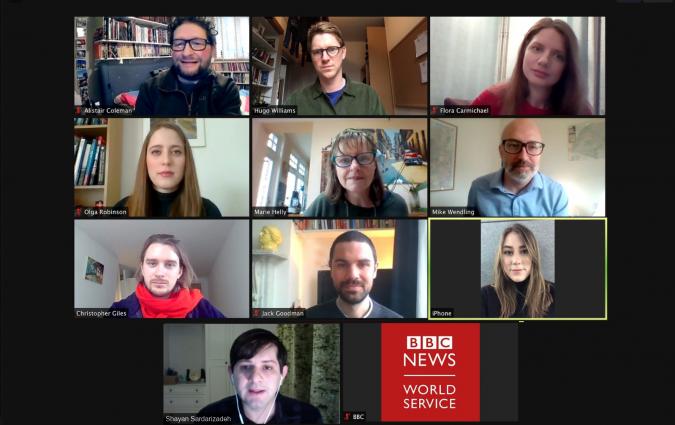In this piece
How to calm your newsroom's metrics anxiety and use analytics to grow

Journalist fellow Elisabeth Gamperl at the 'Süddeutsche Zeitung' office in Munich. Photo: Friedrich Bungert
“Sometimes I feel more like a stockbroker than a journalist,” one of my journalism fellowship peers sighed. We had been talking about how metrics are used in our newsrooms.
It seems journalists in many countries continue to feel uneasy about the evolving formulas against which their success is measured. Those blinking monitors with constantly updating content data are not helpful to everyone. And, to the untrained ear, it can sound like the editor has decided you will now be judged by the number of page views you get, divided by subscription conversions, plus the square root of social and search referral rate, multiplied by dwell time.
I spent my time at the institute speaking to newsroom data experts about how to soothe metrics anxiety and make data a seamless part of newsroom culture. (See the full report Overcoming metrics anxiety: new guidelines for content data in newsrooms below.)
If we don't grapple correctly with this topic, we risk adapting our journalism to match the metrics, instead of adapting our metrics to support our journalism. But I remain confident that, in responsible hands, correctly tracking content data can be a powerful force for enhancing the efficiency, sustainability, and quality of media outlets.
Here are just two examples of data innovations that prove it’s worth rethinking how your newsroom works with content data.
Sophi.io
Sophi.io is the Globe and Mail's artificial intelligence-based automation and prediction engine.
In-house data scientists worked in close consultation with the newsroom over a couple of years to develop Sophi.io, which uses social, retention and engagement data to measure the performance of the articles.
That information is used to assist in programming the homepage and key landing pages. According to Sonali Verma, Deputy Head of Audience at the Globe, it places 99% of the content – only the top three slots are manually programmed by homepage editors. “Some articles and topics are important for us as a brand. The numbers for these pieces are not necessarily very good, but we know that this is an important article to write [and promote],” she said.
Verma said that the algorithm is doing what homepage editors did before: responding to numbers and taking action based on them. “We would like to let talented journalists do other work than watching numbers all day – like finding a good news story or doing a sensitive interview with some empathy, or gathering news that other people can't find.”
Diversity bots
Gender diversity bots are currently being used at media outlets like the Financial Times and Dagens Nyheter. These bots are trained to count the frequency with which women and men are quoted in news articles.
It’s not just an altruistic response to the equality gap: research shows a positive correlation between stories that include quotes from women and higher rates of engagement with female readers – an untapped market.




